Best Scanner Antenna – Diamond D3000N Discone Review
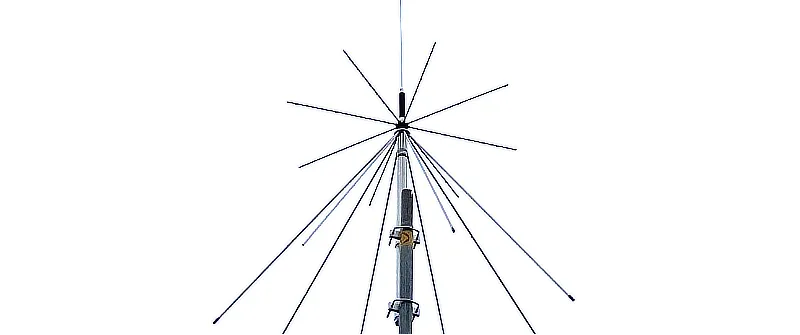
I believe this to be the best discone scanner antenna, and I will explain why.. It is the Diamond D3000N discone. Additionally, I have included various specifications and an English version of its installation assembly instructions (and some photos).
UPDATE: After 5+ years of operation in my outdoor environment, see my recent photo below of this excellent performing scanner antenna! The best discone antenna will perform year after year without issue. And this one remains good as new.. Stainless Steel. Zero rust. All mechanical/electrical connections – solid. My environment ranges from wet to dry to snow, sun, heat, cold.. you name it. 30 below zero to the 90’s of summer. No problem.
Diamond is considered to be one of the best (among several) VHF/UHF antenna manufacturers. They are located in Japan.
Why I like the Diamond D3000N and why it’s the best scanner antenna
>> View this beauty at their storefront on amzn
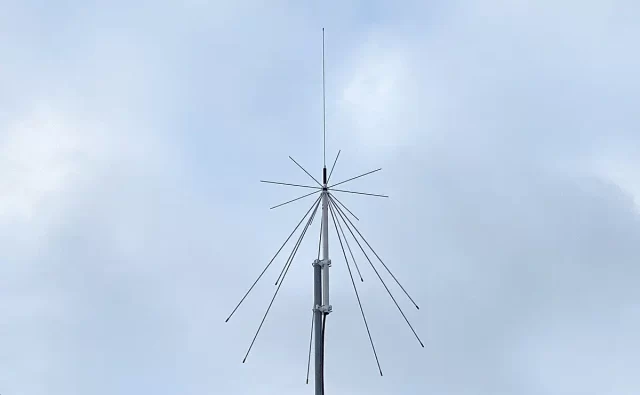
Quality. Ultra wide-band discone (omni-directional). This antenna covers a huge range of frequencies from 25 Mhz all the way to 3 Ghz! Seriously, that’s ultra wide. There is A LOT going on within the many FCC frequency allocations of this antenna’s range / bandwidth!
Reputation. Diamond has been in the business of making antennas for a very long time. They are a well respected company.
Stainless Steel Components. This antenna is not going to corrode. This is not only important from a standpoint of longevity, but for its electrical connections where all the rods piece together.
What is a discone antenna?
First, by it’s unique design, it is exceptionally wideband. It is omnidirectional, vertically polarized and with gain similar to a dipole. It’s made of a disc, a cone, and an insulator.
Discone Antenna Formula
The disc. It should have an overall diameter of 0.7 times a quarter wavelength of the antenna’s lowest frequency.
The cone. The length of the cone should be a quarter wavelength of the antenna’s lowest operating frequency. The cone angle is generally from 25 to 40 degrees.
The insulator. The disc and cone must be separated by an insulator, the dimensions of which determine some of the antenna’s properties, especially on near its high frequency limit.
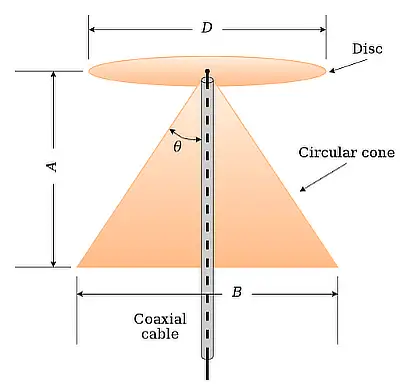
Diamond D3000n specifications
- Receive 25-3000 MHz
- Transmit 6m, 2m, 70cm, 33cm, 23cm (*50, 144, 430, 904, 1200 MHz)
- Assembled Height (67 inches)
- Assembled Max Width (33 inches)
- Mast Diameter (1 – 2 inch)
- Wind Rating (90 mph)
- Connector (N Female)
*50-54 MHz (6m) adjustable
Coaxial Cable for D3000n connection
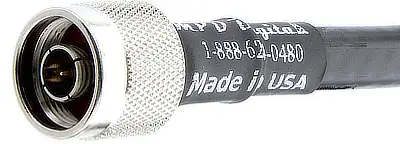
Coax cable needs to have N Male connector on one end for connection to the Diamond D3000n antenna. The other end depends on what you’re connecting to. Also, in my opinion, it’s worth spending the extra money to get good coax cable – especially if you’re going to be transmitting.
My personal preference for my various semi-permanent ‘base installation’ needs is US MADE Ultra Low-loss MPD Digital LMR-400 Coaxial Cable. Yes, it’s costly.
MPD Digital LMR-400 (N-male to N-male) choose your length
(amzn)
MPD Digital LMR-400 (N-male to PL-259) choose your length
If the price made you gasp, you might consider LMR-240 instead, particularly if you’re not going to be transmitting. Here are various options and manufacturers thereof..
LMR-240 (with at least one end being N-male)
(amzn)
More on the Diamond D3000n review..
After assembling (see below) and installing – and connecting it to my scanner setup, I was very surprised how much more that I could pick up (and further away) than what I was using before.
Most antennas are purposely designed to function well at a specific frequency or narrow range. This makes good sense for specific types of communications where that’s all you’re doing (using a specific type of radio for comms on a specific frequency band).
But for a scanner, you want a wide band antenna because scanners can scan a very wide range of frequencies! I won’t get further into the tech, but that’s the short explanation of “why a scanner antenna”.
I did my research before choosing this antenna. And I definitely wanted whatever would be the best scanner antenna. And I didn’t want to have to replace it after 5 years.. Evidently this one is the “go to” antenna for scanners. It’s not cheap. But you know what they say, “You get what you pay for”. It’s why I believe that it’s the best discone antenna for a scanner.
It will last for many, many years without a problem out in the weather elements. Stainless steel. And the build quality was quite apparent when I assembled it.
Assembling the Diamond D3000N
I assembled it in the shop:
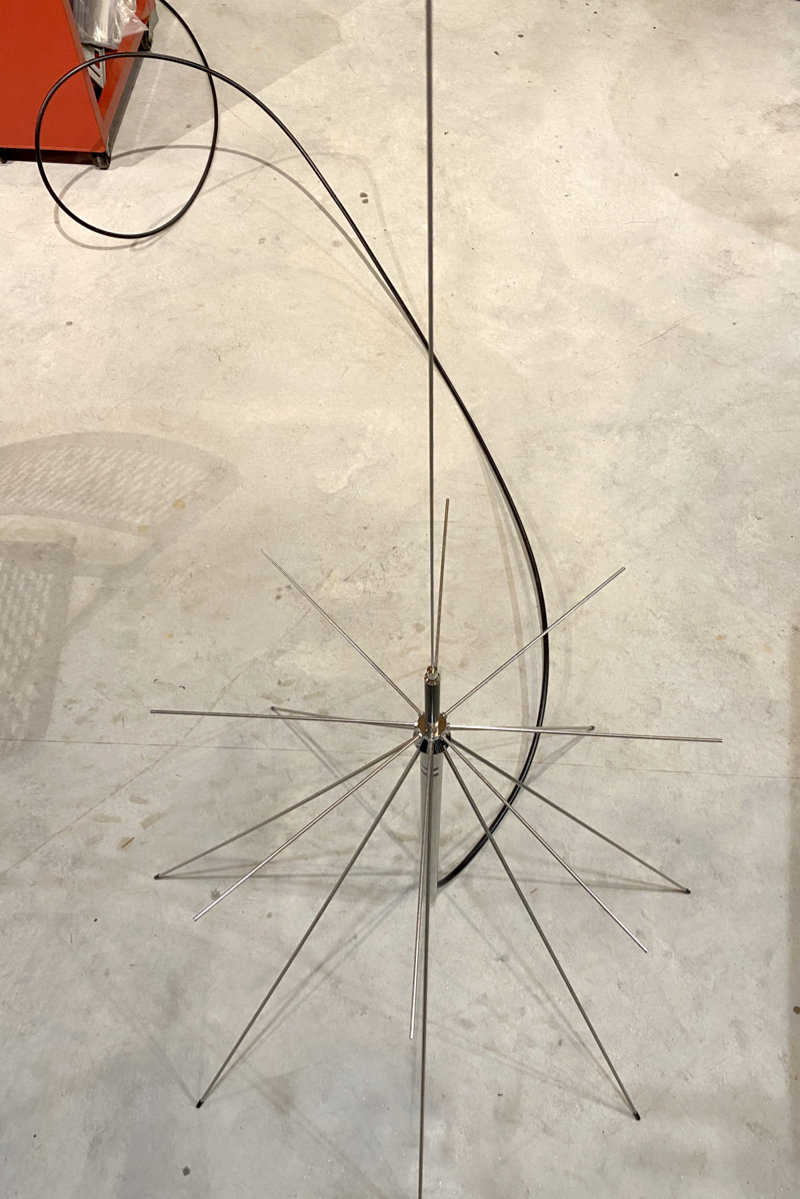
Here’s a close up picture of the stainless steel construction of the Diamond brand scanner antenna:

In case someone comes across this on an internet search, here is the manual / spec-sheet with installation assembly instructions that came with the antenna. I scanned it so I could post it here. Maybe this will help someone who is curious.
Diamond D3000N Assembly Instructions Manual
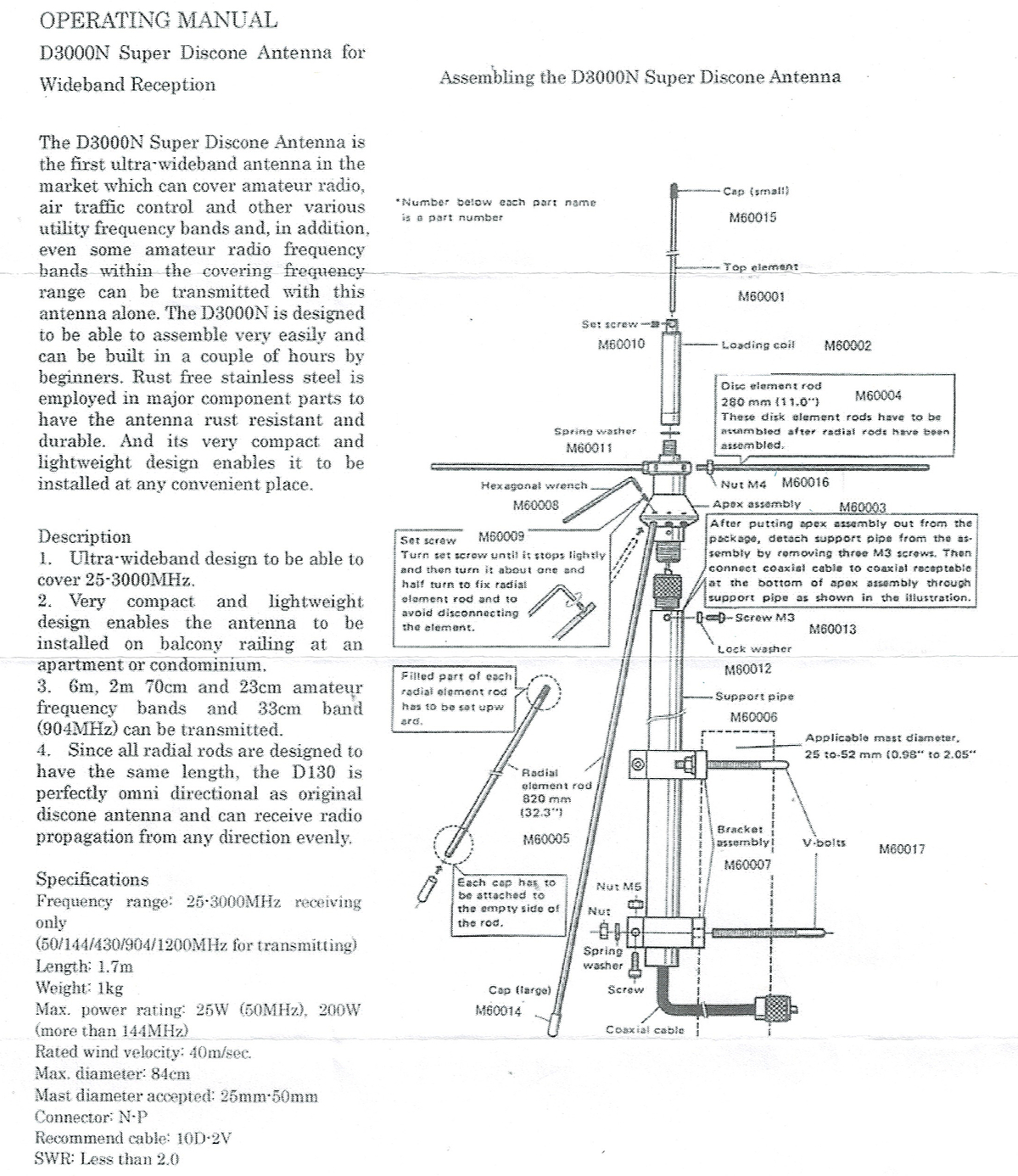
My Best Scanner Antenna
Here’s an update picture of my discone scanner antenna. It has been up on the mast for many years now, and doing great! So happy with it!
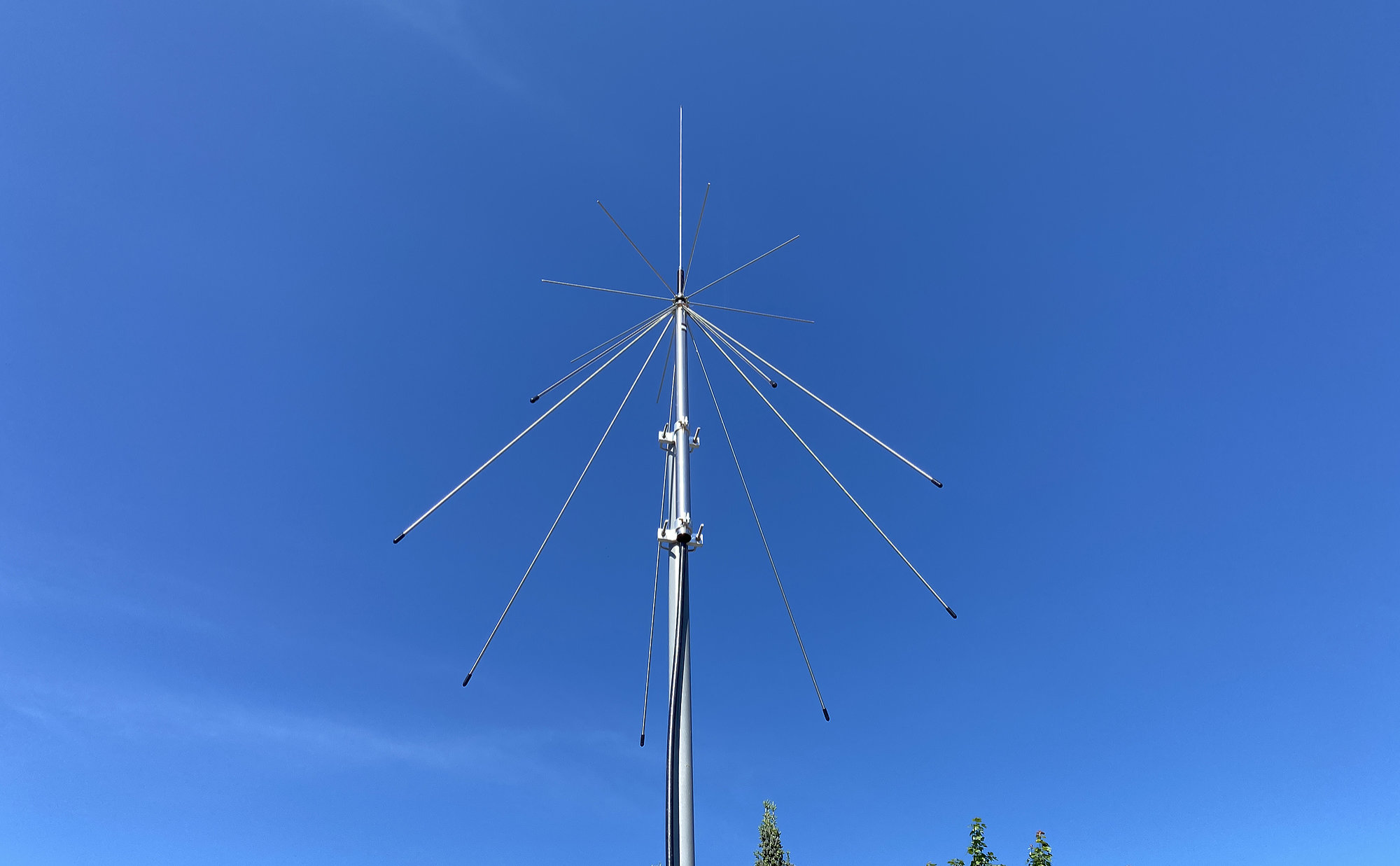
A Scanner For Preparedness
First of all, I simply like radios – and antennas. They’re fun to play with. It just is – for me… Maybe because my dad was a Ham / Amateur Radio operator and I’ve been around this tech since a child.
With that said, there are several reasons why it’s a good preparedness asset. A scanner is a tremendous resource for gathering information about what’s going on out there in your region.
Police. Fire. EMS. Business bands. Marine radio. Consumer 2-way radios. FRS/GMRS. MURS. Ham radio. Aircraft. Civilian. Military. There’s lots of communications going on through the airwaves!
It is a hobby all by itself. But it can also reveal ‘the pulse’ of what’s going on in your area. Police. That activity is good to know too.
Bear in mind that many or even most police comms are digital these days. You need a scanner that can decode these signals. In my rural location, most police comms are using digital ‘P25’. Although I can hear some police communications analog. All EMS and Fire in my area are FM / analog.
By the way, I use RadioReference.com as a great resource to find frequencies to monitor (the “go to” resource for this type of info).
Do any of you have a scanner? Which one?
